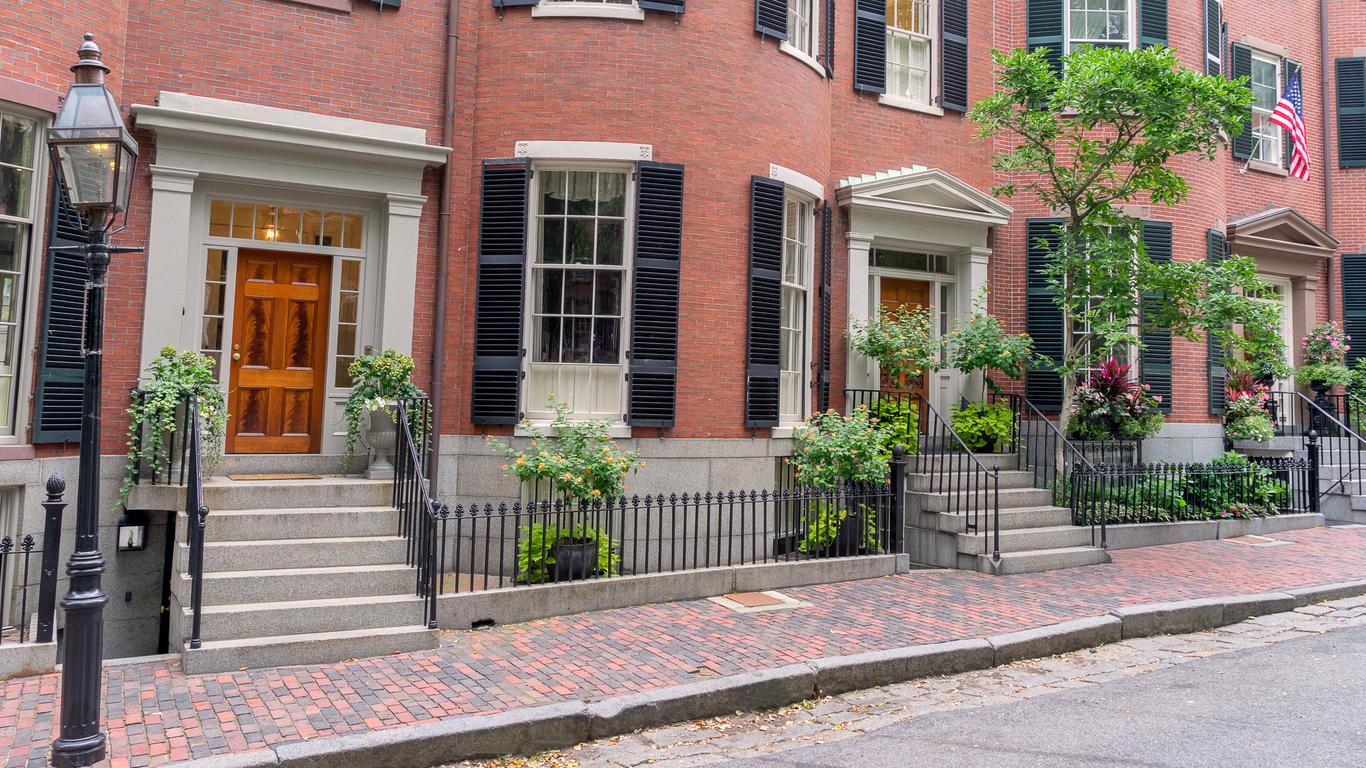A charmingly preserved enclave of American history, the Beacon Hill Historic District in Boston is a step back in time, with cobblestone streets, gas-lit sidewalks and Colonial brick row houses. Its designation as a historic district and then a National Historic Landmark in 1962 ensures its longevity, while the 1798 copper and 23-karat-gold domed State House shimmer on the hilltop, reminding both visitors and residents alike that the area is a prestigious powerhouse in Massachusetts.
Tourists inevitably flock to Charles Street, the main shopping strip of Beacon Hill, for antiques, boutiques and old-fashioned children’s toys, and then stay into the evening for its trendy eateries and dive bars tucked into narrow brick alcoves and alleyways. Strolling along Acorn Street, renowned as the most photographed street in Boston, is a walk through the city’s 19th century past, once home to innovative artisans, craftsmen and coachmen for affluent families. Free Massachusetts State House tours, open to the public, reveal the opulent grandiosity of East Coast Colonialism.
Divided into three sections, the highly residential Beacon Hill district caters to wealthy Boston families on the South Slope and Flat of the Hill, and to Suffolk University students and politicians on the North Slope. Main roadways include Bowdoin, Charles and Park Streets, which are serviced by Massachusetts Bay Transportation Authority (MBTA) subways. The riverfront of the Charles River Esplanade runs along the district’s western border, providing ferry service from various points in Boston.
For all its historical significance, the Beacon Hill district is the source of more recent local pride for its Bull and Finch Bar, used for exterior shots and interior inspiration for the Cheers television show. Another notorious claim-to-fame is Park Street Church, a storehouse for gunpowder during the War of 1812, and the now-sacred spot where Samuel Francis Smith belted out his America the Beautiful for the very first time in 1831.





